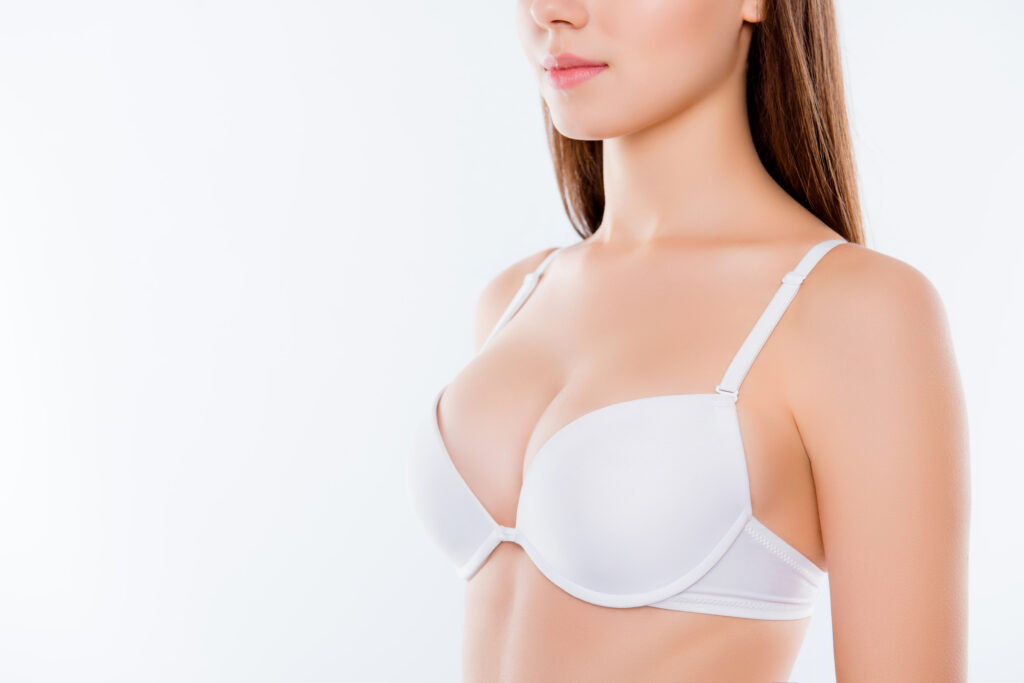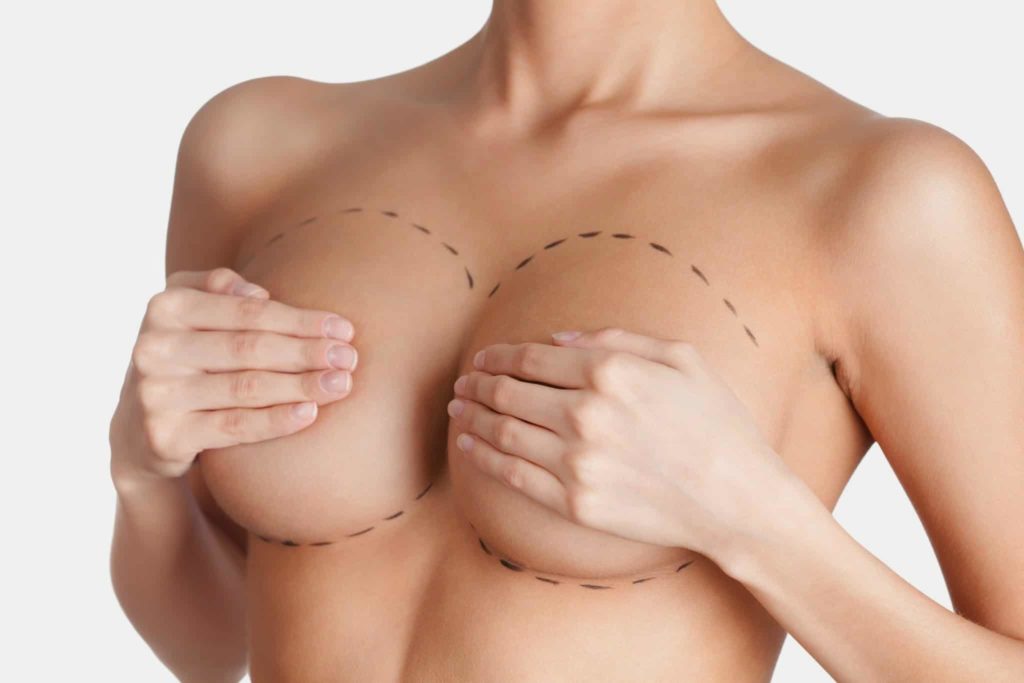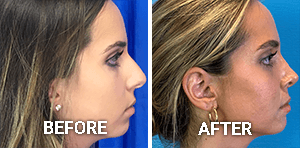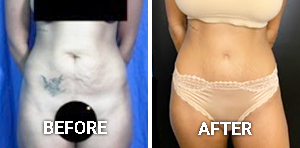Breast Reduction
Conveniently located to serve the areas of Beverly Hills and Greater Los Angeles

Breast reduction (or reduction mammoplasty) enhances the appearance of your bust by giving you smaller, perkier breasts that are proportionate to the rest of your body. This procedure is performed to relieve a wide variety of medical problems that women with large pendulous breasts may experience. In addition to causing emotional distress and negative self-perception, overly heavy and pendulous breasts can contribute to a number of health concerns and daily challenges ranging from poor posture to back pain. Breast reduction offers an effective solution to improving your appearance and relieving your physical discomfort.
Contents
- 1 Benefits
- 2 Consultation
- 3 The Schnur Sliding Scale
- 4 Getting Ready for a Breast Reduction
- 5 Recovery
- 6 Insurance Coverage and Financing Options
- 7 FAQ
- 7.1 Am I a candidate for a breast reduction?
- 7.2 What does the breast reduction procedure involve?
- 7.3 What are the advantages of breast reduction?
- 7.4 What is the length of this procedure?
- 7.5 How many treatments are required?
- 7.6 How long will results last?
- 7.7 Will I experience pain during the procedure?
- 7.8 When can I return to work or school?
- 7.9 Will my insurance cover this procedure?
- 7.10 How much does this procedure cost?
Are you the Right Candidate?

In Dr. Michael Omidi’s extensive experience performing breast reduction, different patients have unique reasons for requesting the procedure. The most common reason is genetics; some women just happen to be born with an overly large bust and surgery offers the most effective means of making breasts proportionate to the rest of the body.
In other cases, pregnancy and weight gain may contribute to stretching and enlargement of your breasts, necessitating a cosmetic intervention. Lastly, a breast reduction offers an excellent means of restoring a balanced appearance when one breast is much larger than the other.
Benefits
- Breast reduction makes your breasts proportionate to the rest of your body.
- It gives your breasts a more balanced and flattering appearance.
- The procedure relives medical problems associated with heavy and pendulous breasts.
- It can alleviate neck pain, shoulder pain, breast pain, skeletal problems, breathing. problems, skin irritation, and difficulty with hygiene.
- Breast reduction can be a solution to psychological or emotional problems.
- Most patients report a boost in self-esteem following the procedure.
Consultation
Scheduling a consultation is a crucial first step in achieving your breast reduction goals.
A consultation allows Dr. Michael Omidi to carefully assess your needs and discuss your desired results. Dr. Michael Omidi will spend as much time as necessary to evaluate your needs and determine which treatment options are best for you. He will make sure that you have realistic expectations for breast reduction results. You and Dr. Omidi will also discuss any prior medical conditions or drug allergies.
The Schnur Sliding Scale

The most reliable method for evaluating your eligibility for breast reduction is the Schnur Sliding Scale, which allows Dr. Omidi to determine the right tissue amount to be removed from each breast. The Schnur Sliding Scale is also used to differentiate between medically necessary breast reduction procedures, which are covered by most insurance companies, and purely cosmetic ones. It measures the patient’s body surface area in relation to the weight of breast tissue to be removed. If these two factors fall below the 22ndpercentile, the procedure will be classified as cosmetic, which means that it is not likely to be approved by insurance companies. If body surface area and breast tissue weight removed are above the 22nd percentile, then the surgery will be deemed medically necessary. Click to Calculate Body Surface Area.
Getting Ready for a Breast Reduction
Dr. Michael Omidi will instruct you to stop smoking and avoid medications that may contribute to increased bleeding during a breast reduction. The day before surgery, you should take care not to drink or eat anything after midnight. On the morning of surgery, take a prescribed nausea medication with a small sip of water and avoid wearing makeup or perfume.
How is a Breast Reduction Performed?
After a careful evaluation, Dr. Michael Omidi will decide which breast reduction technique is best for you depending on breast shape, fullness, and the desired result. Generally, Dr. Michael Omidi takes the following basic steps while performing a breast reduction:
- An experienced anesthesiologist or CRNA will use general anesthesia for your safety.
- Dr. Michael Omidi will make incisions to reshape the breast. Following his minimally-invasive approach to plastic surgery, he will strive to make as few incisions as possible to minimize scarring.
- Dr. Omidi will strive to conceal incision lines by carefully placing them in breast contours.
- He will then eliminate excess fat and loose skin through the incisions.
- Dr. Michael Omidi may also move the nipple to a higher position.
- He will reduce the areolas if they have been stretched due to the size and heaviness of the breasts.
- In the end, we will close the incision with sutures.
In most cases, breast reduction takes from 1 to 3 hours to perform. Only one treatment is required with the long-lasting results guaranteed to bring you satisfaction for many years to come.
Recovery
On the day of the procedure, make arrangements for someone to drive you home after surgery. Immediately after surgery, you may experience some drainage from the incisions. It can be easily controlled with the aid of drainage tubes. Patients may experience some bruising and swelling immediately after a breast lift. It will peak during the first 36 to 48 hours after the procedure and gradually resolve over the following 2 weeks. Swelling may take up to 3 to 4 months to completely resolve.
Patients may return to normal activities within 1 or 2 weeks after the procedure.
You should avoid vigorous physical exercise for 4-6 weeks following surgery. Since the milk ducts and nipples are left intact, breast reduction surgery usually will not affect your ability to breast-feed. Dr. Omidi and his staff are committed to treating patients with the highest consideration and care. They will follow up after the procedure to ensure that you are following a smooth recovery process. If necessary, Dr. Omidi will prescribe safe oral medication to manage any mild discomfort after surgery.
Insurance Coverage and Financing Options
The cost for a breast reduction surgery may vary from patient to patient depending on various factors; however, we guarantee that our pricing will always be competitive with that of other local providers furnishing equivalent services. Breast reduction is typically covered by PPO insurance. We use the Schnur Sliding Scale to determine whether your procedure would be deemed as medically necessary. We are familiar with the criteria used by insurance providers and will attempt to get your procedure approved. Even if you decide to undergo breast reduction for purely cosmetic reasons, we provide excellent financing options, and discounts for multiple procedures are available.
FAQ
Am I a candidate for a breast reduction?
The best candidates for breast reduction surgery are those with breasts that are too large in proportion to the body frame; heavy, pendulous breasts with nipples and areolas that point downward; one breast being larger than the other; back, neck or shoulder pain caused by the excess weight of the breasts; skin irritation beneath the large breasts; indentations in the shoulders from tight bra straps; restriction of daily activity due to the size and weight of the breasts; and dissatisfaction or self-consciousness about the large size of the breasts.
What does the breast reduction procedure involve?
A breast reduction procedure consists of incisions being made in order for the plastic surgeon to remove excess skin and fat, reposition the nipple to a higher position, and reshape the breast. Several variations of the procedure exist and Dr. Omidi will decide which technique is best for you depending on breast shape, fullness, and the desired result. Since the milk ducts and nipples are left intact, breast reduction surgery usually will not affect your ability to breast-feed.
What are the advantages of breast reduction?
The advantages of a breast reduction include:
• Reduce back, shoulder and neck pain
• Relieve skin irritation under the breasts
• Relieve indentations in the shoulders due to heavy breasts
• Regain the ability to engage in physical activity without hindrance
• Improve self-image
What is the length of this procedure?
The typical breast reduction procedure takes 1-3 hours.
How many treatments are required?
Only one treatment is required.
How long will results last?
The results are long-lasting usually for many years.
Will I experience pain during the procedure?
As anesthesia is used, there is no pain during the procedure. A certain degree of swelling and bruising is normal. Mild discomfort is usually easily controlled with medications prescribed by your plastic surgeon.
When can I return to work or school?
You can return to normal activities within 7-10 days.
Will my insurance cover this procedure?
If excessive breast size causes functional problems, insurance may pay for the surgery. Functional problems may include neck pain, back or shoulder pain, breast pain, difficulty with hygiene, skin irritation, skeletal problems, breathing problems, psychological or emotional problems, or interference with normal daily activities. Pre-authorization by the insurance company is required prior to surgery.
How much does this procedure cost?
The cost for this procedure may vary from patient to patient depending on various factors; however, we guarantee that our pricing will always be competitive with that of other local providers furnishing equivalent services. We provide excellent financing options, and discounts for multiple procedures are available. Schedule a Consultation or Call 800-310-7000 for more details about procedures and pricing.





